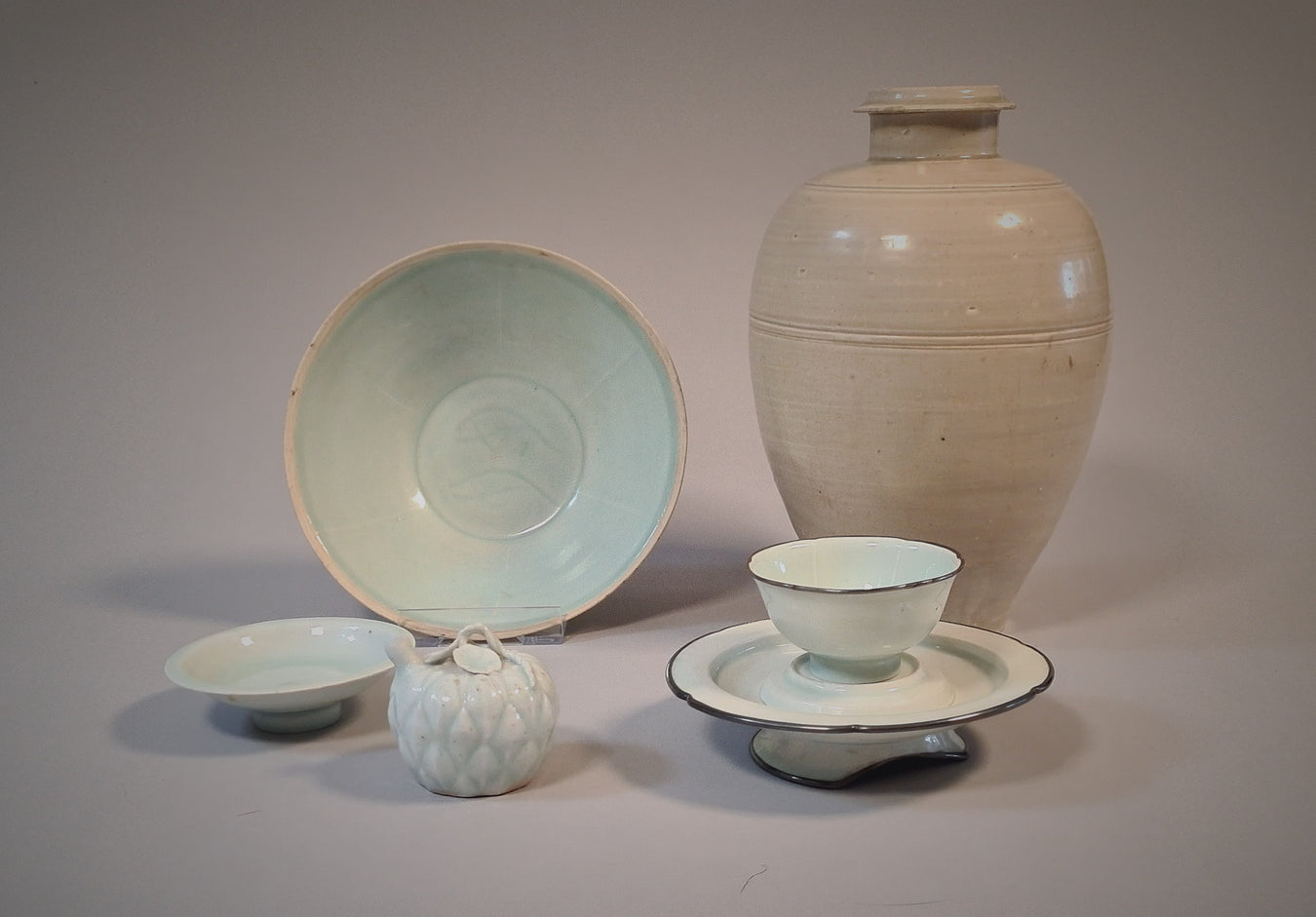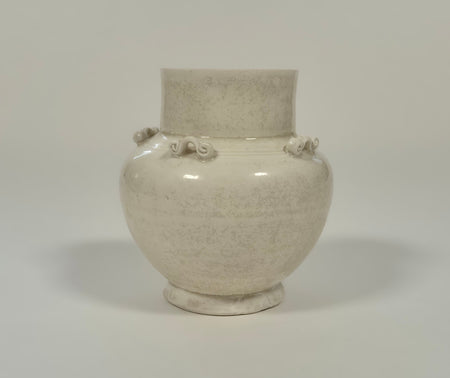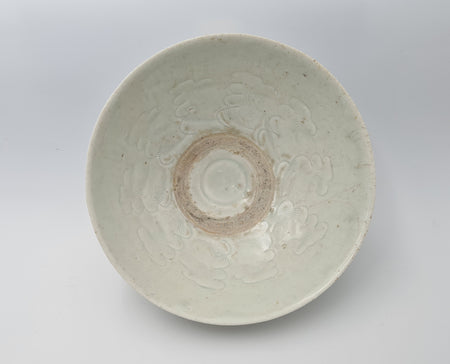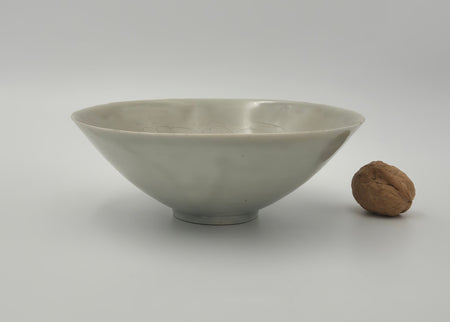Qingbai ware

Qingbai Ware, a distinguished ceramic tradition flourishing during the Song (960-1279) and Yuan (1279-1368) dynasties, derives its name from the unique hue of its glaze, characterized by a blend of pale bluish-green (qing) and white (bai). Esteemed for its exquisite white, translucent bodies and the luster and texture of its glazes, fine Qingbai pieces were sought after for their elegance and beauty.
The term "Qingbai" has been documented as early as the Song dynasty to describe porcelains adorned with a bluish-white glaze. Despite a decline in popularity after the Song period, Qingbai Ware continued to hold significance in the ceramics industry, particularly during the Yuan dynasty. However, with the advancements in porcelain technology during the Ming dynasty, such as the development of wucai ("five-color") ware and improvements in blue-and-white ware, Qingbai Ware gradually yielded its dominance to newer varieties like tianbai ("sweet white") ware.
During the latter part of the Qing dynasty, the term "Qingbai" was replaced by "Yingqing" or "shadow blue" in some circles, reflecting evolving terminology within the ceramics community.
While historical accounts often credit kilns around Jingdezhen in Jiangxi province as the birthplace of Qingbai Ware, archaeological findings have sparked debates about its origins. Discoveries in Fanchang, Anhui province, suggest early experimentation with similar clay compositions, challenging the traditional narrative.
Qingbai kiln sites were dispersed across China, with notable concentrations in the province Jiangxi, home to the renowned Jingdezhen kiln. Other regions pruducing Qingbai ceramics included Guangdong, Zhejiang, Hubei, Hunan, Anhui, Henan, Fujian, and Guangxi, each with different styles and techniques. Qingbai ware encompassed a vast array of forms, ranging from everyday objects like bowls and jars to vessels for rituals and ceremonies. Other shapes found includes boxes, vases, ewers, incense burners, plates, dishes, cups, water droppers, lamps, granary models, and various utensils. A common practice was to copy the shapes and patterns of silver objects.
Despite being overshadowed by other Song wares like Ding, Ru, and Jun, Qingbai Ware held immense cultural and historical significance. Its elegance and craftsmanship were celebrated not only within China but also in international trade, with excavations across Asia revealing its extensive reach and influence.
During the early Northern Song period, Qingbai ceramics were scarce and of low quality. Their surfaces were rough, lacking thinness and precision in craftsmanship. The glaze was coarse and dull, often appearing greenish-blue in patches. Decorative techniques were limited, with some pieces featuring carved motifs like lotus petals. Potters were utilizing the upright firing method, and ceramics without glaze on the rim fired upside-down from this period remain undiscovered.
In the mid-to-late Northern Song era (1075-1127), there was a marked improvement in quality. The bodies became delicate and highly transparent, resembling modern ceramics. Glaze layers thickened, achieving a vibrant green akin to tallow jade, possibly influenced by techniques from the northern Ding kilns.
During the Southern Song period, Qingbai ceramics gained popularity in urban life, spurred by societal demand and foreign trade development. Production expanded, though quality varied. The Hutian kiln in Jingdezhen maintained its reputation for producing the highest quality Qingbai ceramics in China.
Yuan dynasty vessels and pillows showcased remarkable technical sophistication, featuring intricate appliqué and openwork decoration. High-quality pieces recovered from various sites underscored the ware's significance in domestic and foreign markets.
Qingbai ware laid the groundwork for Yuan-dynasty Shufu ware and the subsequent development of blue-and-white and red-and-white ware. This technological advancement positioned Jingdezhen as the world's porcelain capital, owing much to the invention and production of Qingbai ware.
During the Song and Yuan dynasties, the production of Qingbai ceramics in southern China likely involved the use of dragon kilns, which were common kiln types in Chinese ceramic traditions. These kilns were long, narrow, and undulating kilns built into the slope of a hill. The kiln's design allows for a continuous firing process, with various chambers or compartments along the length of the kiln. Qingbai ceramics were typically fired in a reducing atmosphere, where oxygen levels were controlled to influence the final appearance of the glaze.




